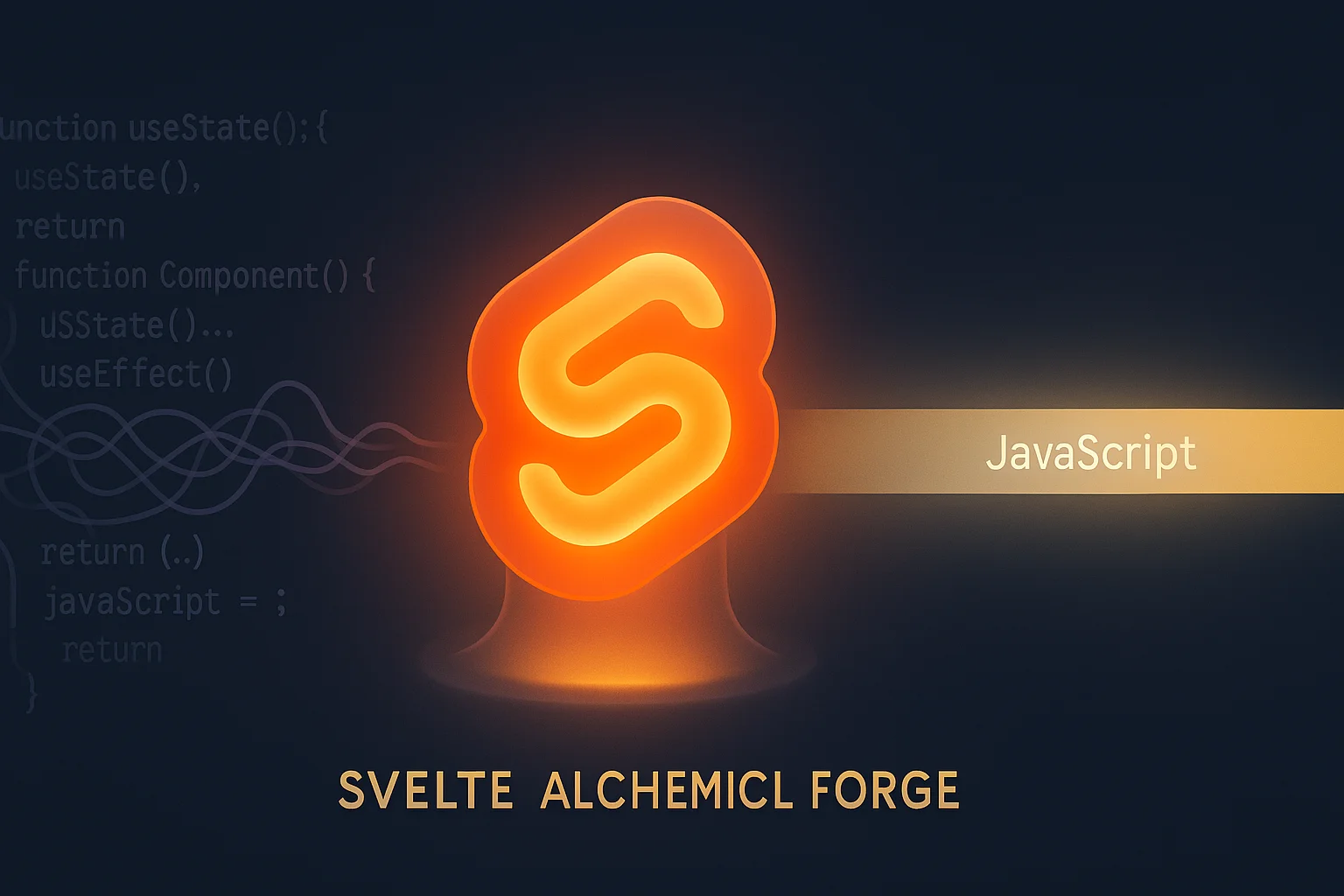Svelte: The Alchemical Forge

Why Svelte represents the purest expression of reactive programming, and how it eliminates the complexity tax imposed by traditional frameworks.
The Complexity Tax
Every framework makes promises. React promised declarative UIs. Vue promised progressive enhancement. Angular promised enterprise architecture.
They all delivered. But they also delivered something else: complexity.
- React: useState, useEffect, useCallback, useMemo, useRef, useContext, useReducer…
- The “rules of hooks” that feel like arcane magic
- Virtual DOM reconciliation that happens behind the scenes
- Bundle sizes measured in hundreds of kilobytes
This is the complexity tax—the cognitive overhead required to use the tool.
The Compiler Revolution
Svelte doesn’t have a runtime. It’s a compiler.
While React ships a reconciliation engine to every user’s browser, Svelte analyzes your code at build time and generates surgical JavaScript that directly manipulates the DOM.
The result?
- 40-60% smaller bundles
- Faster load times
- Better performance
- Simpler code
But the real revolution isn’t technical. It’s philosophical.
Reactivity as First Principle
In React, reactivity is a feature. In Svelte, reactivity is the fundamental nature of the language.
Interactive Demo: Svelte Reactivity
This is Svelte's elemental reactivity:
let count = $state(0);
count += 1; // The UI updates automatically<script>
let count = $state(0);
</script>
<button onclick={() => count += 1}>
Clicked {count} times
</button>That’s it. No hooks. No state management. Just pure, elemental reactivity.
The assignment count += 1 is not just changing a variable. It’s a declaration of change. The compiler sees it. The compiler understands. The compiler generates the precise code needed to update the DOM.
The Power of Constraints
Svelte is opinionated. It enforces single-file components. It requires a build step. It has specific conventions.
These aren’t limitations. They’re design decisions that enable the compiler to be smarter.
By constraining the surface area, Svelte can make powerful guarantees:
- ✅ Your component will only re-render when its dependencies change
- ✅ Your styles are automatically scoped
- ✅ Your transitions just work
- ✅ Your bundle is optimally tree-shaken
The Migration Path
We analyzed the Quantum Encoding website:
- 294 TypeScript files
- 91 React components
- 1.1GB node_modules
After migration to Svelte:
- ~200 files (simpler components)
- 60-70 Svelte components (less boilerplate)
- 40-60% smaller bundles
But the real win isn’t the numbers. It’s the developer experience.
Code that was 634 lines in React became 200 lines in Svelte. Not because we cut features. Because Svelte requires less ceremony.
Why This Matters
Every line of code is a liability. It must be written, read, understood, maintained, and debugged.
Svelte doesn’t just reduce lines of code. It reduces cognitive load. It lets you think about what you’re building, not how the framework works.
This is the Alchemical Forge: a tool that disappears and lets your intent shine through.
The Verdict
React and Vue aren’t going away. They have massive ecosystems, battle-tested patterns, and millions of developers.
But for new projects? For teams that value simplicity over legacy?
Svelte is the superior choice.
It’s faster. It’s simpler. It’s more joyful to use.
And when combined with SvelteKit’s file-based routing, server-side rendering, and zero-config deployment?
You have a complete framework that rivals Next.js in power but surpasses it in elegance.
Ready to see Svelte in production? This entire website is built with SvelteKit. Get started with your own project →